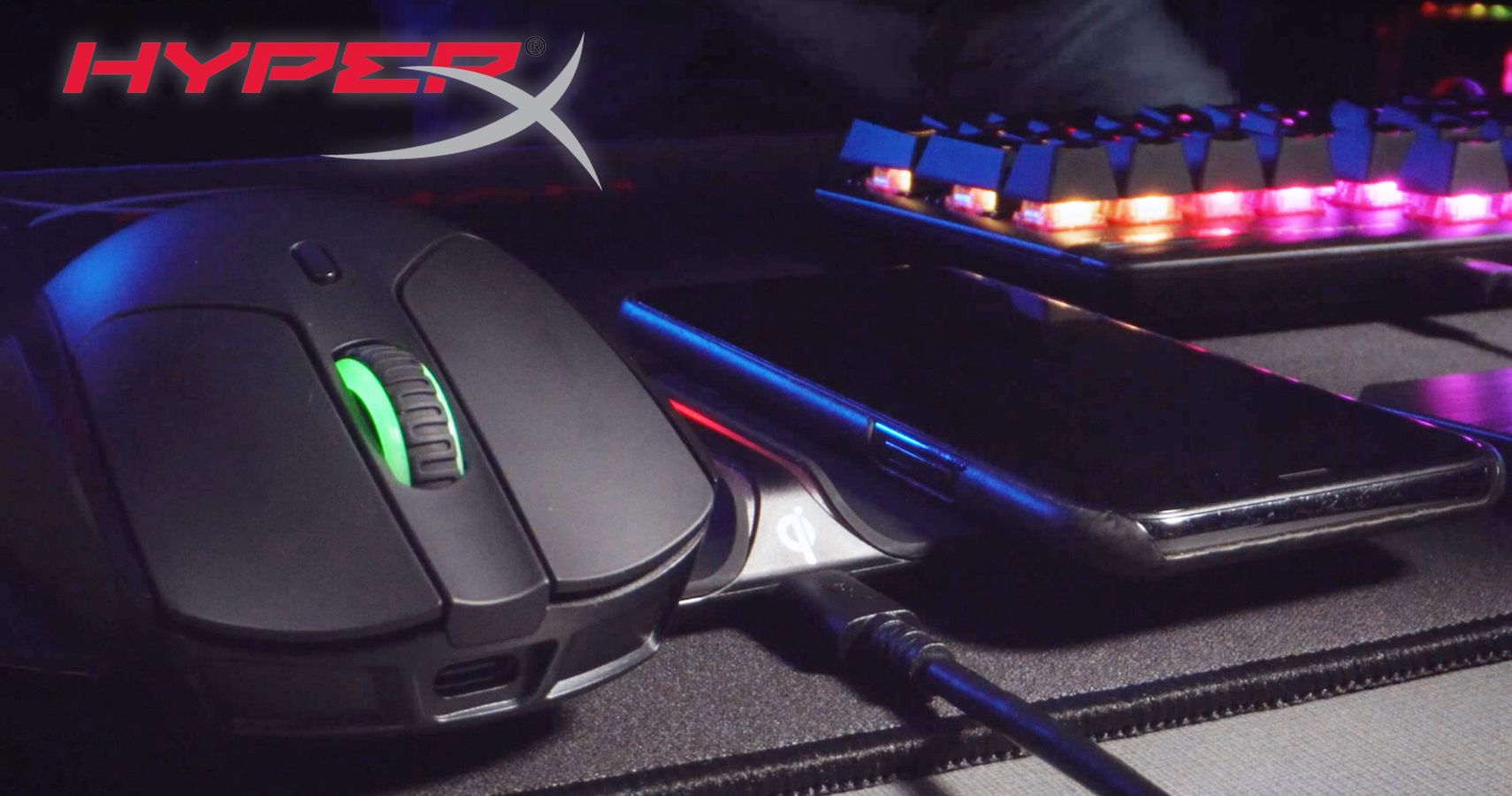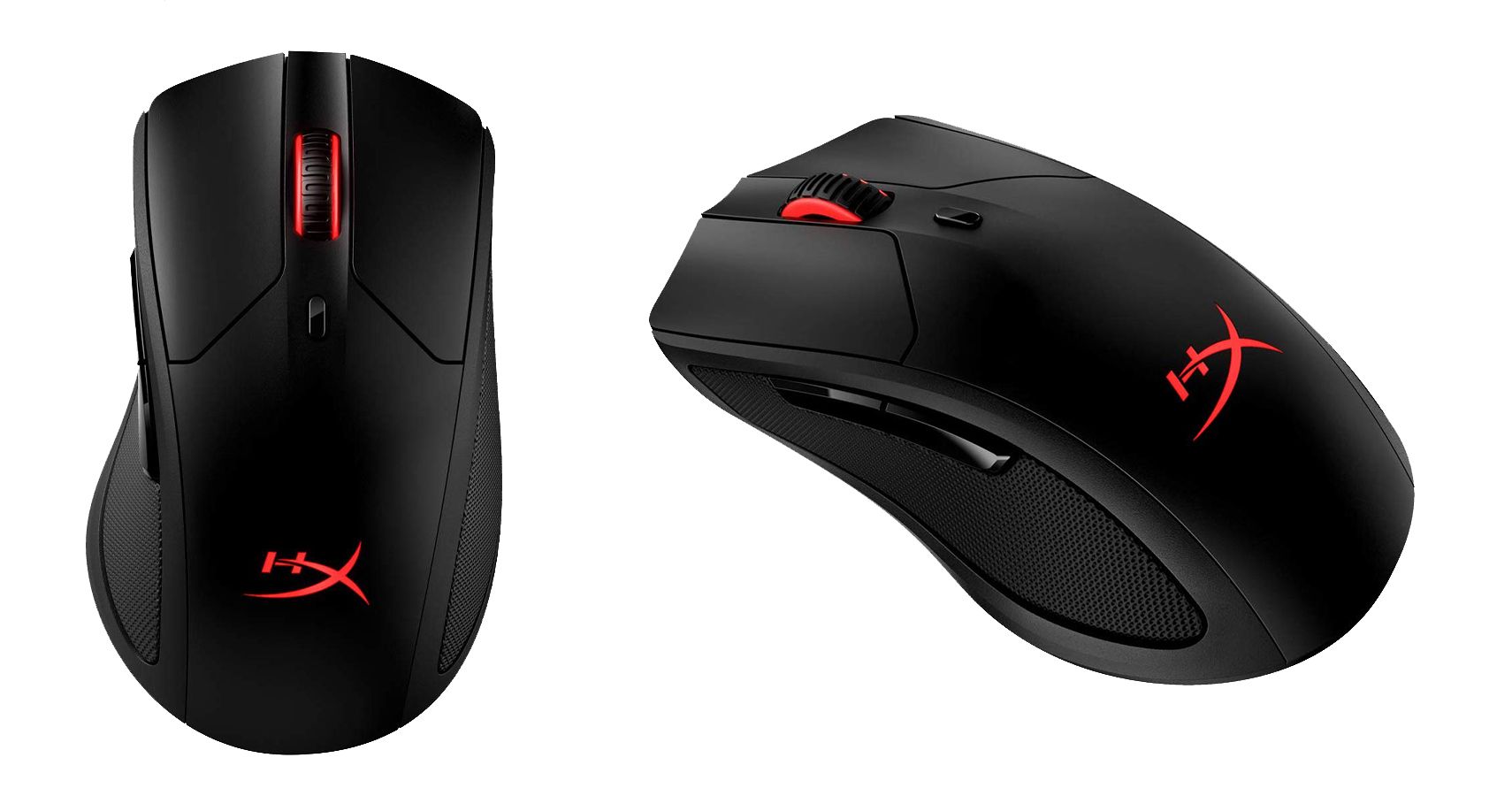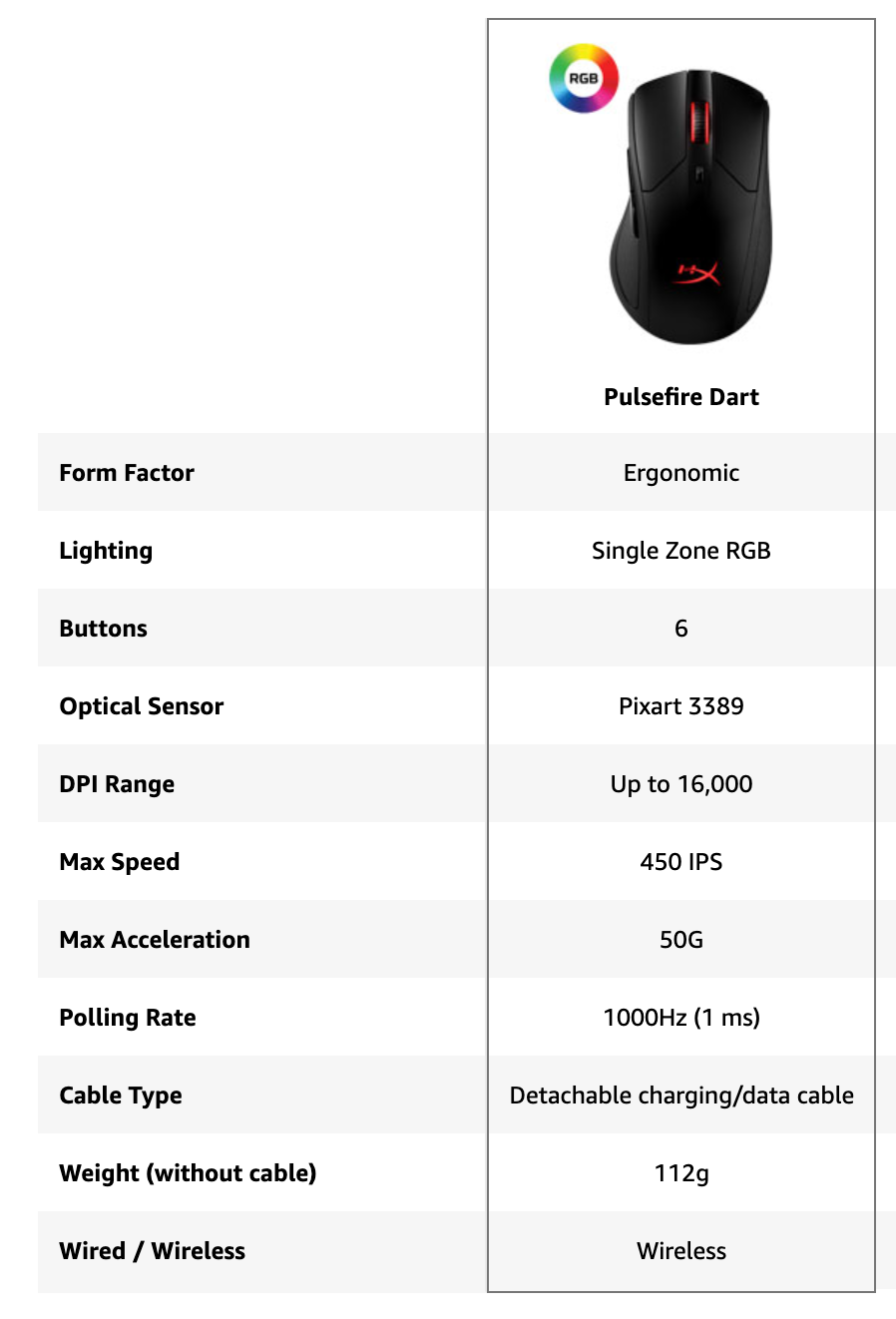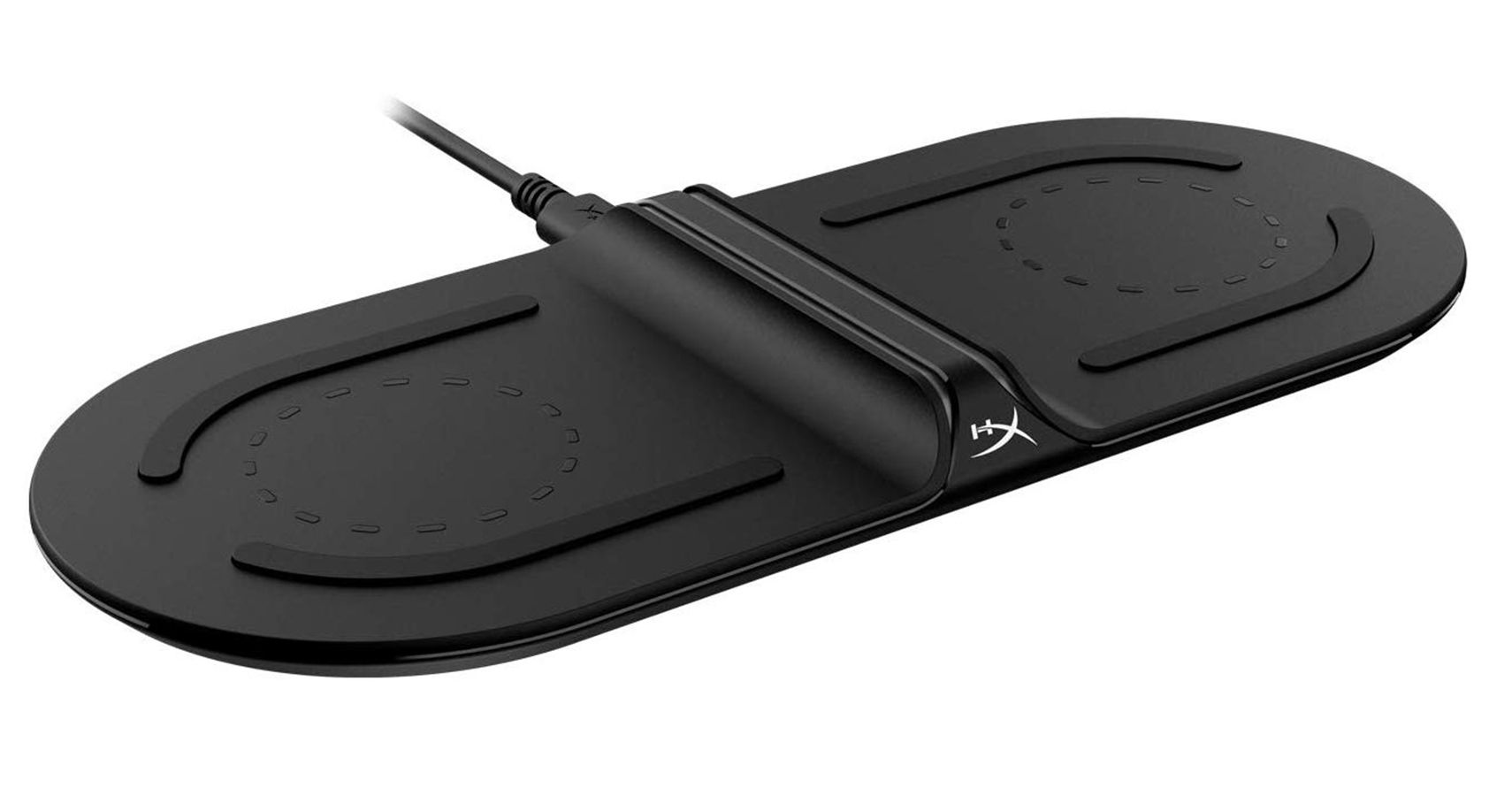Anyone with a halfway decent gaming setup has more cords than they can count. Wires make for a messy gaming setup — they can look bad onstream, interrupt gameplay or become frustrating to navigate whenever players need to double-check their connections.
As a gamer, it’s nice to imagine what life is like without so many wires. Among its numerous computer accessory options, HyperX sells several hardware products that endeavor to solve this specific problem.
One of its newest offerings is the HyperX Pulsefire Dart ($99.99). It's a sleek, black mouse with highly customizable options that allow players to set it up to pulse with specific RGB light color patterns (hence, the name Pulsefire). Like most modern mouse options, it comes with six buttons that players can bind as they’d like. Gamers can choose to leave it plugged in via USB or can detach its cord for wireless play.
To use it wirelessly, the player can insert a small USB component into the USB port of the computer or accessory and turn the mouse on. If the wireless range isn’t quite enough for the player, they can instead plug in the included extender, which lengthens the wireless reach. Running only on battery power, the product will last 90 hours between charges, though it will last only 50 if users have activated LED lighting options.
The 16,000 DPI (dots per inch) optical mouse weighs 110 grams, which makes it a relatively heavy option compared to similar alternatives. Most gaming mice average around 87 grams to 99 grams, though some are as light as 48 grams while others are as heavy as 132 grams. The mouse itself is 124.8 mm long, which is about average length for a medium-sized gaming mouse. It’s 43.9 mm wide, a width that works well for its ergonomic shape.
If the mouse were limited to just these specs, it might not be anything special. But the HyperX Pulsefire Dart has a few features — or gimmicks, depending on a player's take — that set it apart from competitors.
Perhaps most notable is the product's ability to charge wirelessly via Qi charger. While it will charge when plugged into a source, players can instead opt to use a Qi charging device. This is a nice touch as it means a player won't constantly have to switch out the product's USB accessories to alternate between charging and playing wirelessly. As such, HyperX offers its own option for precisely this purpose.
The Qi Chargeplay Base ($59.99), which isn’t included with the mouse, purports to “rapidly” charge two devices at once. However, it charges a single device even more quickly as it reduces power to both when there are two items on it. Regardless, this dual-charging functionality is a good accessory for people who'd like to charge their Qi charging-compatible phones while they play.
As for how practical it is, it’s less of a “must-have” and more of a “nice-to-have.” After all, when charging two devices, it really only reduces the need for one cord as the charger itself must be plugged in to use it. There's something that inherently feels nice about setting down a phone or a mouse on a charging pad, as opposed to having to locate the end of a charger cord to plug in these devices. One minor annoyance with regard to Qi charging is that devices must be placed on the charger in very specific ways, a lesson learned after struggling to get the HyperX Pulsefire Dart to charge on it before bothering to read the manual.
Taken together, the HyperX Pulsefire Dart is a fine mouse, and the Qi Chargeplay Base is a fine charger. However, neither does anything that’s game-changing. Wireless is certainly nice, but there’s no real performance benefit to it. It ultimately boils down to preference and aesthetics.
Putting it to the Test
At the outset, a wireless mouse is tricky business. Many people believe a wireless mouse can cause a very short — as in, milliseconds — delay in between the gamer's movement and how that movement renders on a PC screen.
For the vast majority of players, this doesn't matter. But at the competitive, top-tier level where there's frequently thousands — if not millions — of dollars on the line, some people claim those split seconds can worsen gameplay.
Fortunately, upon putting the HyperX Pulsefire Dart up to several aim training tests, these percieved fractional delays didn’t seem to cause much of an impact. Whether it was plugged in or wireless, it performed about the same.
Game performance aside, there was one other essential thing of note about the mouse itself.
Movement is extremely important in competitive games. So perhaps it wasn’t ideal that there’s something about the “feel” of the mouse that seemed a little strange. Possibly because of its weight, it slid against surfaces slightly differently than I would have liked. Its movement felt rather grainy, possibly by design. But my personal preference leans toward smooth, quick movements.
At first, it felt to me as though there were something stuck on the bottom of the mouse, like a piece of food or dust had gotten in there to make for a scratchier experience. But upon dusting and deep cleaning my setup and the mouse, it was evident this was a function of the HyperX Pulsefire Dart design.
I tried a number of ideas to see if I could make it work more in line with my personal gameplay style. One test involved trying it on different surfaces. I've never had a problem using a gaming mouse on my plastic desk protector, which is intended to be a universal surface suitable for gaming with a mouse. But when I used the HyperX mouse on this, I couldn’t shake that scratchy feel. So, at my partner’s suggestion, I invested in a name-brand gaming mousepad. This alleviated the issue somewhat, but the competitor’s mouse still felt stronger overall.
I doubt I would have noticed had I not had the opportunity to do a side-by-side comparison. Plus, it's important to note that this may be indicative of gaming preference as opposed to product performance. I have relatively small hands, so I've become accustomed to smaller, lightweight accessories.
If a person likes a wireless mouse that feels a bit weighty when moving, then the HyperX might be ideal. But in testing it with an aim trainer on my standard sensitivity, my stats confirmed the lighter mouse is a stronger option.
Verdict: A Solid Pair of Products
It’s hard to say the HyperX Pulsefire Dart and accompanying Qi Chargeplay Base are ideal products for a serious gamer. But given these products have a number of distinct features at a middle-ground price, they're certainly solid choices for someone aiming to combine quality and aesthetics.




